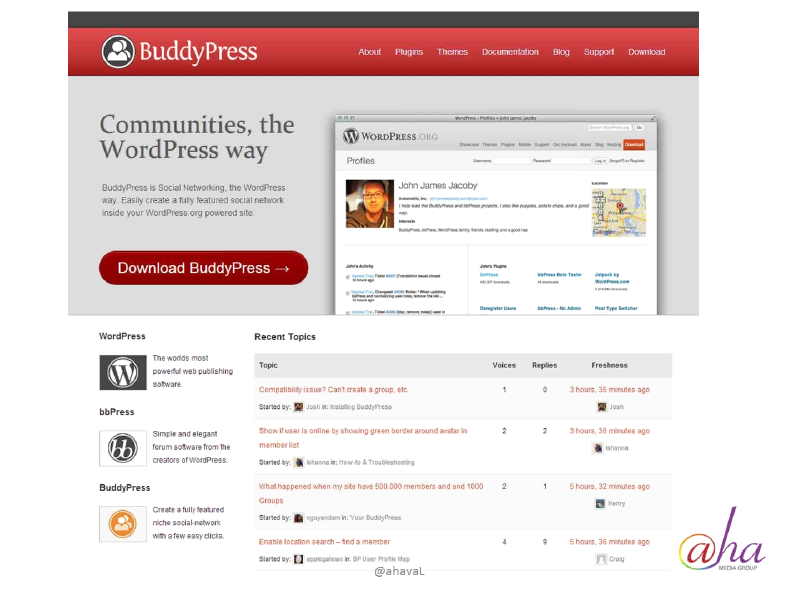Right Now
Developing a Mobile Content Strategy That Works
Shweiki Media printing company specializes in hassle-free printing of magazines, post cards, fliers, brochures and more... For FREE print quotes and samples:...
Mobile has changed nearly everything about our lives in the last
three to five years, from the way we interact with people to how we
access information and make daily decisions.
Here Shweiki teams up with Ahava Leibtag, author of The Digital Crown: Winning at Content on the Web and president of Aha Media Group, to present a must-watch marketing webinar on how to develop mobile content strategies that work.
or
Click here to download the audio podcast of this presentation.
Mobile Content Format
 Figure 1
Figure 1When dealing with mobile content engagement, the first challenge
typically occurs in the area of formatting, as one’s page can be viewed
differently from different platforms.
When looking at a site on a traditional desktop [Figure 1] , it typically looks very different than the view one would have when accessing it on their smartphone [Figure 2].
This can often create problems for brands, and as more and more
audiences are accessing a business’s site through their mobile devices,
if the site isn’t corrected, it will continue to cause problems down the
road.
Mobile Content Context

As in most situations, context is crucial, and it’s important to
figure out how one’s mobile content strategy is working for users. In
many cases, they are accessing content through mobile devices, and it’s
important to consider format, context, and use-case scenarios when
serving up content experiences, ensuring a pleasant experience for users
no matter what device they’re using to access it.
Understanding Content and Distribution
While the type and quality of content is obviously important, another
factor to consider is the format and distribution of said content–and
how it should be altered to properly target one’s audience. For example,
take the challenge of creating a public service announcement about the
effects of marijuana on the human brain as a way to explain to teenagers
that they should avoid use of the drug.

While the type and quality of content is obviously important, another
factor to consider is the format and distribution of said content–and
how it should be altered to properly target one’s audience. For example,
take the challenge of creating a public service announcement about the
effects of marijuana on the human brain as a way to explain to teenagers
that they should avoid use of the drug.
When it comes to effectively transmitting this message to teenagers,
an important factor to consider the format of the message. A content
format that would be appropriate for an educator like a white paper or a
curriculum would not be appropriate for a teenager, because a teenager
probably won’t download a white paper or read a curriculum. However,
given their fondness for sites like YouTube, a teenager is likely to be
interested in video, so that might be a good way to format the message
and reach them effectively.
Once one figures out the type of format for the content, the next step is deciding the best place to distribute the content.
The content isn’t the website; the content sits on the website. The
content isn’t the blog; it sits on the blog in the form of blog
articles. And Facebook is not content; it’s a delivery vehicle for
sharing content.
Thinking about content this way, as divorced from the form of
distribution until one decides what the best form of distribution and
format is, is really critical to thinking about how to deliver content
within a mobile format.
Use-Case Scenarios
Developing a use-case scenario is the process of understanding one’s
audience. When are users accessing one’s content? Are they looking for
entertainment or information? Are they fully engaged or glancing
through? In order to properly define one’s mobile strategy, one needs to
understand the strengths and weaknesses of their content.
This is where the importance of research comes in. It’s necessary for
a business to find out as much information as possible about who their
customers and targets really are so that they can truly understand the
different use-case scenarios. All in all, one needs to know how they’re
delivering content and whether they’re meeting the needs of the target
audience.
-
Developing a Mobile Content Strategy That Works
orMobile has changed nearly everything about our lives in the last three to five years, from the way we interact with people to how we access information and make daily decisions.Here Shweiki teams up with Ahava Leibtag, author of The Digital Crown: Winning at Content on the Web and president of Aha Media Group, to ...
More Posts
Report This Post
Please complete the following requested information to flag this post and report abuse, or offensive content. Your report will be reviewed within 24 hours. We will take appropriate action as described in Findit terms of use.








